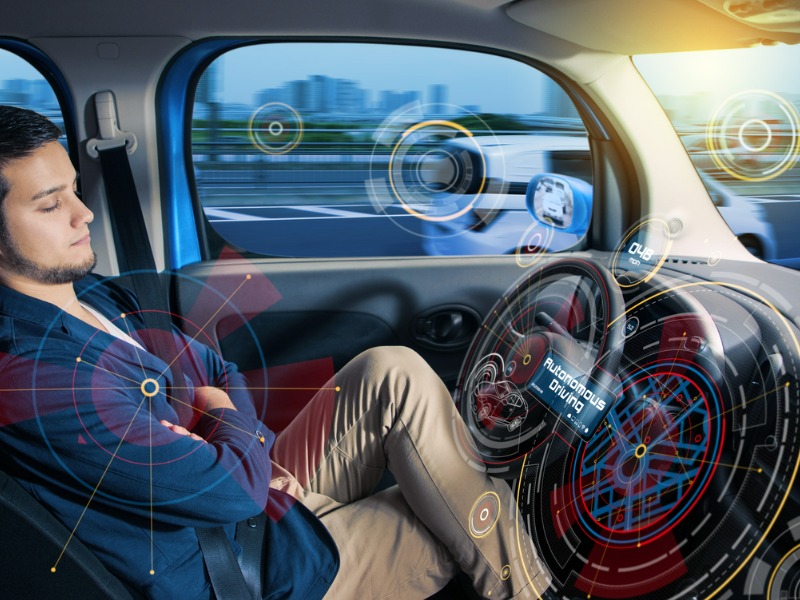When will self-driving tech consistently prevent crashes?

One aim of autonomous driving technology is to take the human element out of the driving ecosystem with an eye toward preventing collisions.
But right now, autonomous driving technology can’t guarantee it will detect and react to road hazards earlier than a human driver.
Worse, a by-product of these technologies is that they can reduce a human driver’s likelihood of intervening in a collision situation because human drivers may be paying less attention to the road. To fully appreciate whether every collision can — or should — be avoided, we must understand the capabilities of the human operator along with the limits of emerging autonomous driving technologies.
Real-world scenario
Let’s look at a 2018 fatal collision between a pedestrian and vehicle that took place in Tempe, Arizona in the U.S. It involved an Uber-owned Volvo SUV outfitted with autonomous driving technology. At the time, the incident raised both technical and ethical questions about the road-readiness of these systems.
The key question remains: could a human driver have done a better job of avoiding the collision than the autonomous vehicle? The answer has some bearing on future development of these technologies, as well as litigation surrounding their use by vehicle owners.
The SUV was travelling northbound in the curb lane at night. A pedestrian was walking a bicycle eastbound across the road. The car’s onboard video cameras captured the moments leading up to the collision, as well as the collision itself. An interior camera showed the car’s driver was not actively driving for a significant period of time before the impact.
Because of this, the driver failed to detect and react to the pedestrian.
The SUV’s autonomous system did manage to detect the pedestrian’s bicycle and identify it as a collision threat 1.3 seconds before impact. But the vehicle never took evasive action because Uber had disabled the emergency autonomous braking in the vehicle — and had reportedly told the driver about it prior to the vehicle’s autonomous test drive.
Reaction times
Let’s look at the time and distance relationships between the vehicle and pedestrian to assess what the outcome might have been if a human had identified the problem and made an emergency response. We can assume the pedestrian was walking the bicycle at an average speed for an adult female, about 1.3 metres per second.
From online reporting, we know the SUV was travelling at 69 km/h and sustained damage to its right front. That means the pedestrian needed to travel less than one metre to clear the SUV’s path and avoid collision.
Typically, a driver will take evasive action by hard braking and steering away only when it’s obvious a collision is imminent. At night, human operators would consider an approaching pedestrian to be a hazard the moment they saw them nearing their vehicle’s travel lane, and when the vehicle’s headlights illuminated the pedestrian.
Step 1 of an avoidance analysis is to determine when a pedestrian can first be seen based on the primary factors influencing nighttime visibility — including streetlights and vehicle headlights. In this case, it’s safe to assume the sole light source in the area was the SUV’s low-beam headlights.
Based on the vehicle’s speed and its new headlight bulbs, a dark-clothed pedestrian would have been detectable by an approaching driver when the vehicle and pedestrian were 53 metres and 3.4 metres away from the impact location, respectively. That’s equivalent to 2.8 seconds before impact.
Once a pedestrian is detected, some time elapses before a driver can engage in evasive action. This is called the ‘perception and response interval’ and encompasses the driver’s processing and interpretation of the visual information and the selection of a response — such as braking or steering — before making an evasive manoeuvre.
Averting disaster
Typically, from the moment of detection, an average driver will take evasive action within 1.5 seconds. So, an average driver in this situation would be expected to start evasive action when the SUV was about 24 metres, or 1.3 seconds, from impact. The SUV’s autonomous system also detected the collision threat 1.3 seconds before impact.
Using emergency-level braking, an average driver could have brought the vehicle to a stop approximately one metre short of the impact location. If the SUV’s automatic emergency braking was active and had immediately initiated maximum braking, it too should have avoided this collision.
The fact that it didn’t raises difficult questions for developers of autonomous driving technology. Insurers, and our society at large, will need to answer those questions with respect to how liability will be handled when human operators could have performed better than a self-driving vehicle.
Harrison Griffiths is a senior associate, collision reconstruction, and Hannah Van Staveren is an associate, collision reconstruction and human factors, at 30 Forensic Engineering. This article is excerpted from one that appeared in the February-March 2023 print edition of Canadian Underwriter. Feature photo courtesy of iStock.com/metamorworks







